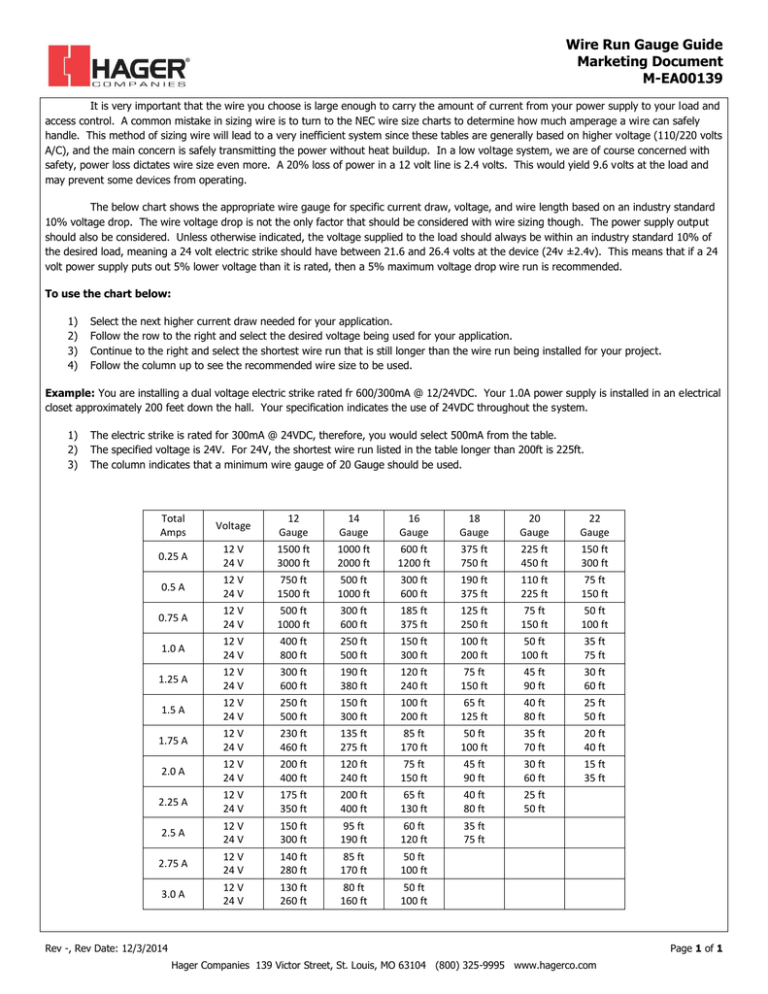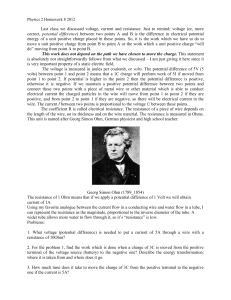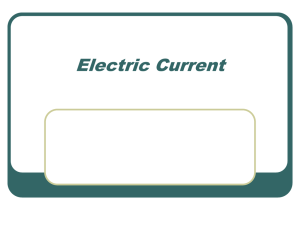Wire Run Gauge Guide Marketing Document M
advertisement

Wire Run Gauge Guide Marketing Document M-EA00139 It is very important that the wire you choose is large enough to carry the amount of current from your power supply to your load and access control. A common mistake in sizing wire is to turn to the NEC wire size charts to determine how much amperage a wire can safely handle. This method of sizing wire will lead to a very inefficient system since these tables are generally based on higher voltage (110/220 volts A/C), and the main concern is safely transmitting the power without heat buildup. In a low voltage system, we are of course concerned with safety, power loss dictates wire size even more. A 20% loss of power in a 12 volt line is 2.4 volts. This would yield 9.6 volts at the load and may prevent some devices from operating. The below chart shows the appropriate wire gauge for specific current draw, voltage, and wire length based on an industry standard 10% voltage drop. The wire voltage drop is not the only factor that should be considered with wire sizing though. The power supply output should also be considered. Unless otherwise indicated, the voltage supplied to the load should always be within an industry standard 10% of the desired load, meaning a 24 volt electric strike should have between 21.6 and 26.4 volts at the device (24v ±2.4v). This means that if a 24 volt power supply puts out 5% lower voltage than it is rated, then a 5% maximum voltage drop wire run is recommended. To use the chart below: 1) 2) 3) 4) Select the next higher current draw needed for your application. Follow the row to the right and select the desired voltage being used for your application. Continue to the right and select the shortest wire run that is still longer than the wire run being installed for your project. Follow the column up to see the recommended wire size to be used. Example: You are installing a dual voltage electric strike rated fr 600/300mA @ 12/24VDC. Your 1.0A power supply is installed in an electrical closet approximately 200 feet down the hall. Your specification indicates the use of 24VDC throughout the system. 1) 2) 3) The electric strike is rated for 300mA @ 24VDC, therefore, you would select 500mA from the table. The specified voltage is 24V. For 24V, the shortest wire run listed in the table longer than 200ft is 225ft. The column indicates that a minimum wire gauge of 20 Gauge should be used. Total Amps Voltage 12 Gauge 14 Gauge 16 Gauge 18 Gauge 20 Gauge 22 Gauge 12 V 24 V 12 V 24 V 12 V 24 V 1500 ft 3000 ft 750 ft 1500 ft 500 ft 1000 ft 1000 ft 2000 ft 500 ft 1000 ft 300 ft 600 ft 600 ft 1200 ft 300 ft 600 ft 185 ft 375 ft 375 ft 750 ft 190 ft 375 ft 125 ft 250 ft 225 ft 450 ft 110 ft 225 ft 75 ft 150 ft 150 ft 300 ft 75 ft 150 ft 50 ft 100 ft 1.0 A 12 V 24 V 400 ft 800 ft 250 ft 500 ft 150 ft 300 ft 100 ft 200 ft 50 ft 100 ft 35 ft 75 ft 1.25 A 12 V 24 V 300 ft 600 ft 190 ft 380 ft 120 ft 240 ft 75 ft 150 ft 45 ft 90 ft 30 ft 60 ft 1.5 A 12 V 24 V 250 ft 500 ft 150 ft 300 ft 100 ft 200 ft 65 ft 125 ft 40 ft 80 ft 25 ft 50 ft 12 V 24 V 12 V 24 V 12 V 24 V 230 ft 460 ft 200 ft 400 ft 175 ft 350 ft 135 ft 275 ft 120 ft 240 ft 200 ft 400 ft 85 ft 170 ft 75 ft 150 ft 65 ft 130 ft 50 ft 100 ft 45 ft 90 ft 40 ft 80 ft 35 ft 70 ft 30 ft 60 ft 25 ft 50 ft 20 ft 40 ft 15 ft 35 ft 2.5 A 12 V 24 V 150 ft 300 ft 95 ft 190 ft 60 ft 120 ft 35 ft 75 ft 2.75 A 12 V 24 V 140 ft 280 ft 85 ft 170 ft 50 ft 100 ft 3.0 A 12 V 24 V 130 ft 260 ft 80 ft 160 ft 50 ft 100 ft 0.25 A 0.5 A 0.75 A 1.75 A 2.0 A 2.25 A Rev -, Rev Date: 12/3/2014 Page 1 of 1 Hager Companies 139 Victor Street, St. Louis, MO 63104 (800) 325-9995 www.hagerco.com





